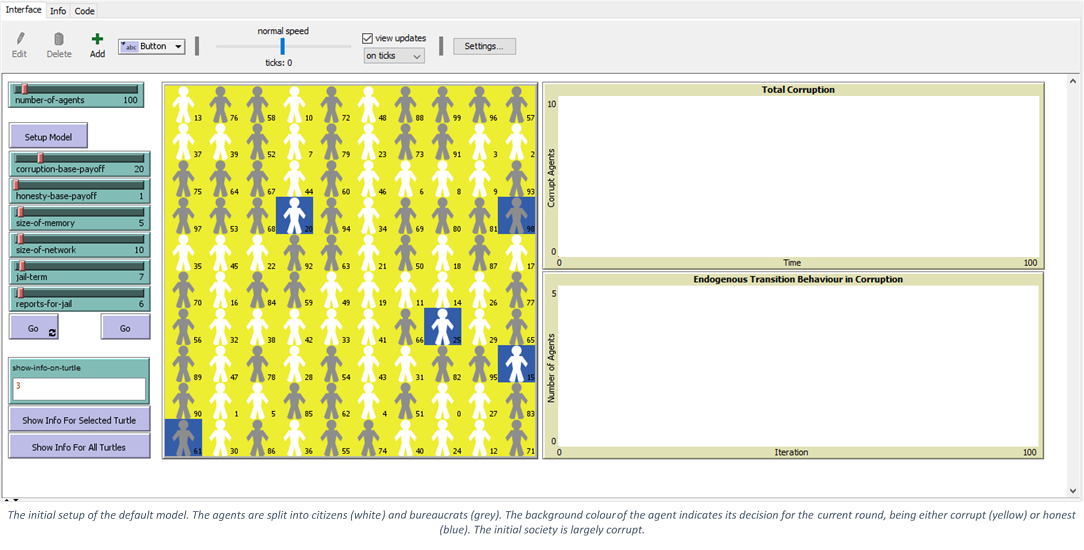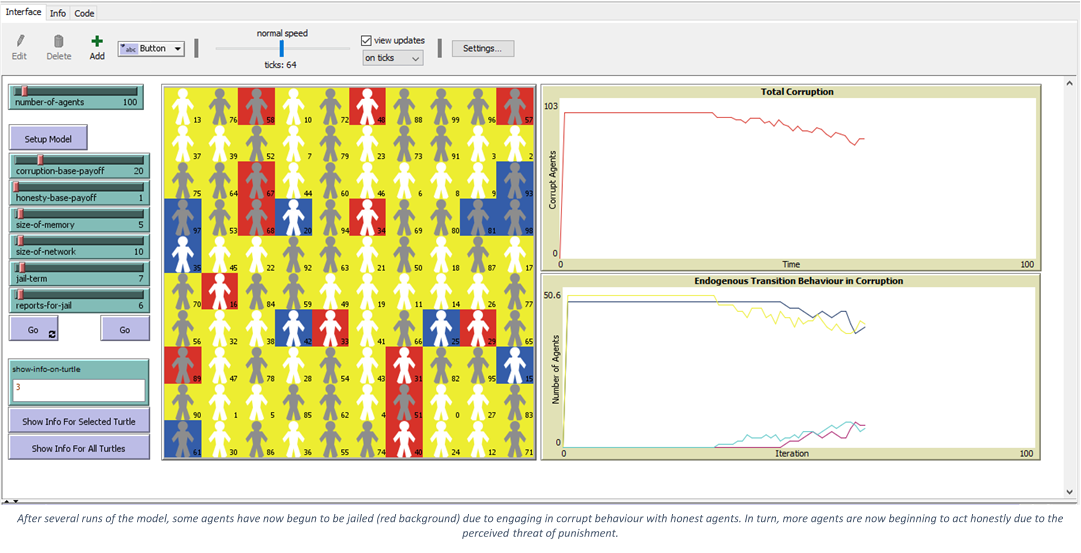Creating an Agent-Based Model of Hammond's model of social inequality using NetLogo
For this programming-based project I decided to learn about Agent-Based Models (ABMs) by undertaking a project using the NetLogo platform. For this, I decided to implement a model based on Ross Hammond’s model of social corruption (Hammond, 2000).
In this model two sets of agents, citizens and bureaucrats, take part in turn-based interaction. Each turn, each citizen plays a randomly selected bureaucrat in a simple game. Each agent can act in an honest or a corrupt manner, with a balance of risk and reward dictating the playing of each strategy. When two corrupt agents play together they will both receive a bonus payoff greater than that they would have received if both had been honest. However, if one agent is corrupt and the other honest, the corrupt agent is reported to an authority figure. After a set number of reports, an agent goes to jail for a period and is unable to accumulate further wealth during this time. The decision for each agent to be corrupt or honest is based on their memory of past interactions, the actions of ‘friend’ agents in their social network and a random predisposition to honesty that remains constant throughout the run.
The outcome for Hammond’s model under default conditions is that initially, agents are unaware of the risk of corruption so choose to be corrupt. However, as the game progresses and more of their friends are jailed, the agents learn to be honest. At some point a swing point is reached, after which all agents revert to honesty and remain that way indefinitely. For this reason, Hammond extrapolated that with enough policing, even the most corrupt societies in the world would be able to revert to honesty. The model contains several settings that can be adjusted for the user to observe how each will impact the outcome of the model.
As part of this project, it was required that the model code be uploaded to GitHub. This code can be found here.
References
Hammond, R. A. (2000). Endogenous Transition Dynamics in Corruption: An Agent-Based Computer Model. Washington DC: Brookings Institution.


